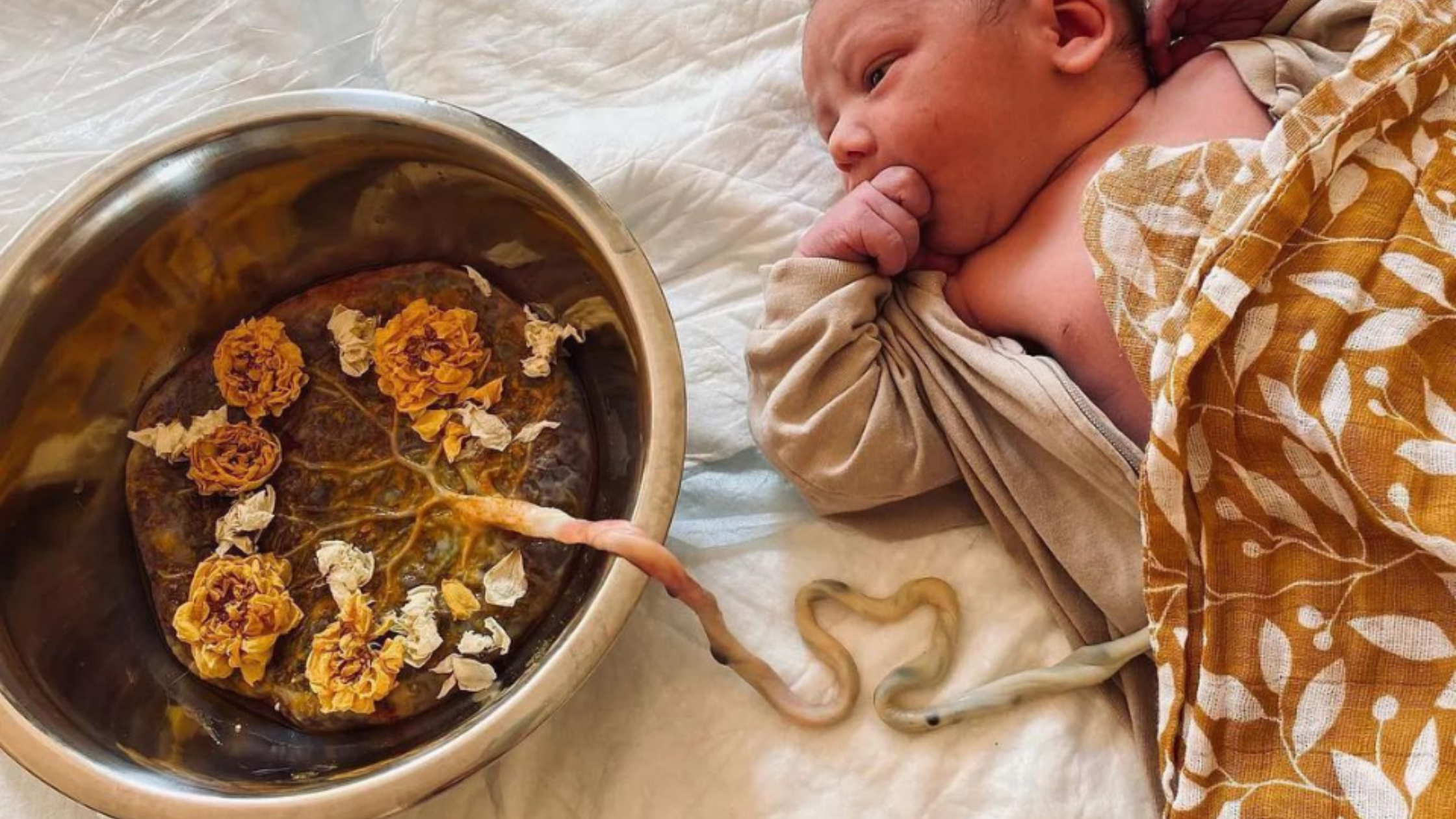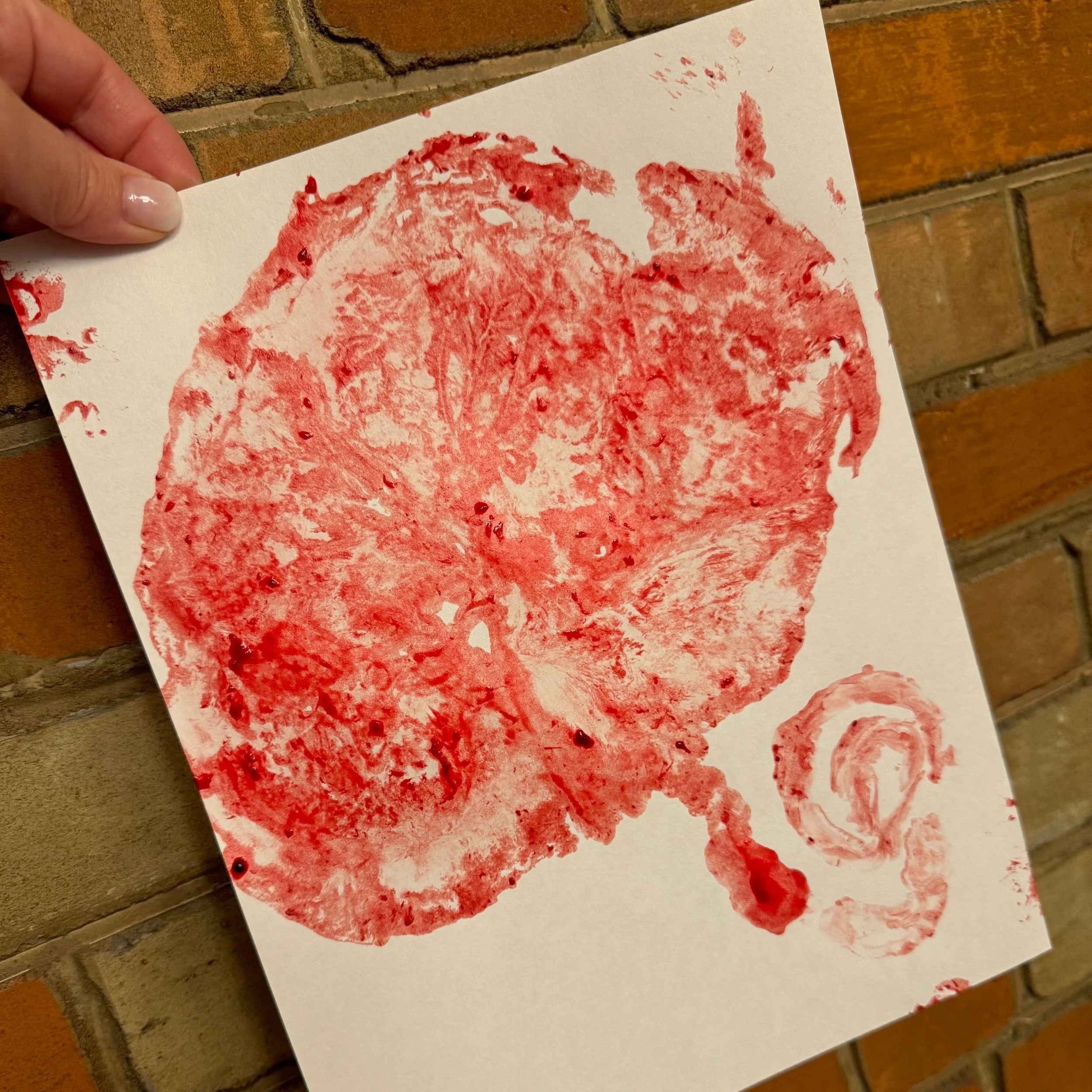Your Placenta
Did you know there are three stages in labour, and pushing your baby out is not the third?
Your birth journey doesn't end once the baby is born. After your baby is born, your body still has some work to do - birth the placenta! Preparing and learning about birthing the placenta is as essential as learning about the rest of the labour and birthing.
Let's dive into the phases of birth so we understand the whole picture.
1) The Early, Active & Transition Labour Stage:
Early labour might feel like mild cramps or a backache. It's a great time to rest, stay hydrated and nourished, and get into a cozy headspace—find your flow. As things progress, active labour kicks in with more intense surges/ contractions. Keep focusing on returning to your natural rhythm—remember, every surge/ contraction brings you closer to meeting your baby. Use this time to practice your breathing and lean into your support system.
2) The Pushing Stage:
You're almost there! This stage can feel empowering for some as they work with their body to bring baby earthside. Listen to your body's cues, and don't be afraid to use/ ask for different positions or take breaks. Whether you're roaring like a lion or whispering affirmations, this is your moment.
3) The Placenta Stage:
Let's pay attention to this crucial part! After your baby is born, your body will still be hard at work delivering the placenta. This stage is often overlooked but is a vital part of birth. The third stage of labour involves the delivery of the placenta, which usually happens within 5 to 30 minutes after birth, depending on your choice of management. You might feel mild surges/ contractions again as your uterus contracts to expel the placenta. Check out the list below for various ways this can unfold and choices you can consider.
Choices to Consider
a print I made of a placenta at a home birth in June 2024
Active vs. Physiological (expectant) Management: You can choose between active management, where medication (a synthetic form of oxytocin) is given to speed up placental delivery, and physiological (expectant) management, which allows the placenta to deliver naturally without intervention. Discuss with your care provider and decide what feels right for you.
Delayed Cord Clamping: allows all of your baby's blood to flow from the placenta to the baby, providing extra iron and stem cells. Your baby is born with approximately two-thirds of their blood in their body and the other third in the placenta. It is up to you, the parent(s), to decide what you do with that very important blood.
• Cord Blood Bank (collecting and storage of the blood and stem cells for use in the furture)
• Delayed Cord Clamping (thirty seconds to a few minutes),
• Optimal Cord Closing (wait for white/ until the cord stops pulsing) or half/ full lotus birth (to not touch the cord until the placenta is born or at all)
Placenta Encapsulation: Some parents opt to encapsulate the placenta, turning it into capsules that can be taken postpartum to aid recovery. You will need a Placental Encapsulation Doula for this.
Cultural or Personal Rituals: Consider if you have any cultural or personal rituals you'd like to honour, such as making a print of the placenta (I love doing this for clients!), planting the placenta beneath a tree, cord burning ceremony, or creating a keepsake.
Preparing for the Third Stage
Birth Preferences/ Plan: Include your preferences for the third stage in your birth plan. Communicate clearly with your birth team about your choices.
Support: Make sure your support system knows your wishes. Very often, new parents are distracted by their beautiful tiny human and unaware of what is or isn't happening during and after the placenta delivery. Be sure your partner, doula, or another loved one understands your preferences so they can protect your wishes even if you're distracted!
Knowledge: Educate yourself on what's possible for birthing your placenta.
Looking for expert guidance on getting clear about your birth preferences? Get in touch for a quick Birth Preferences Check-In!


